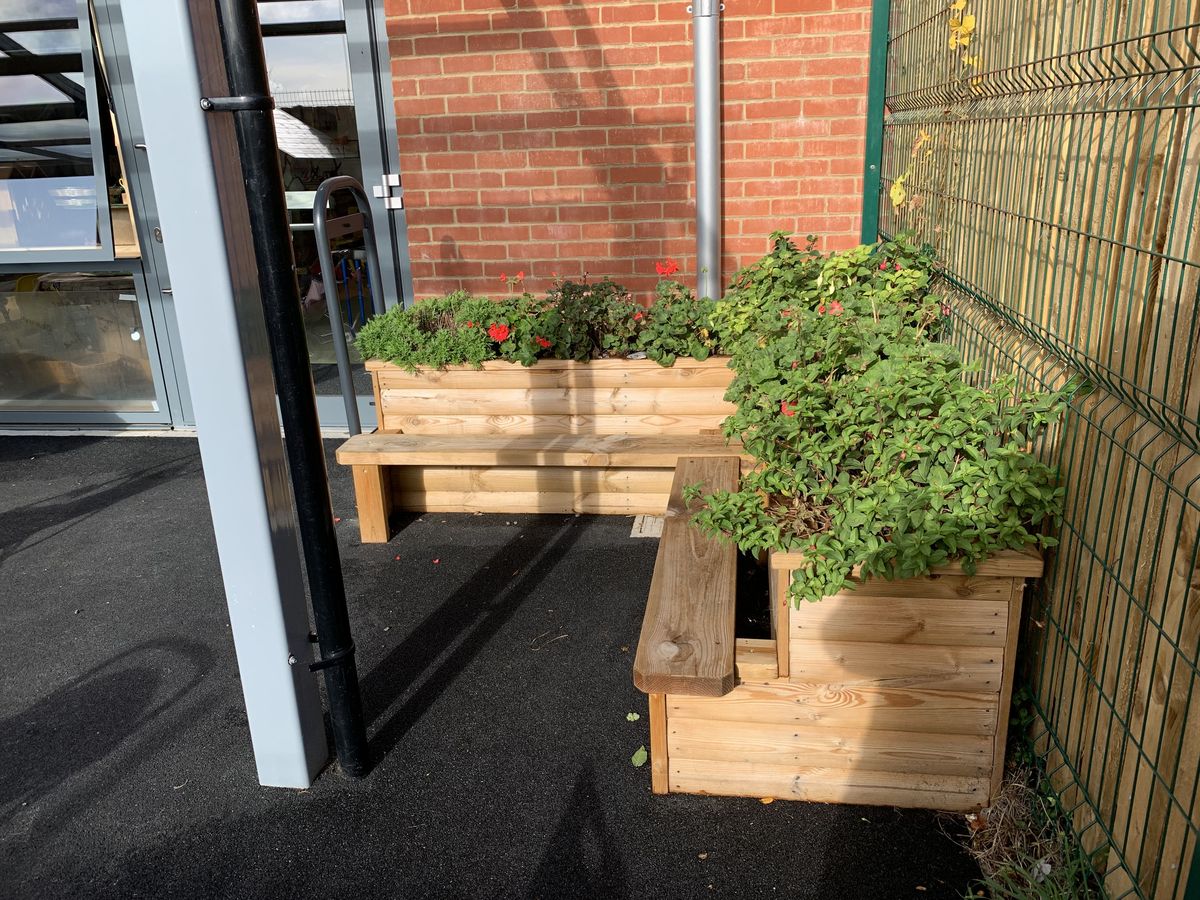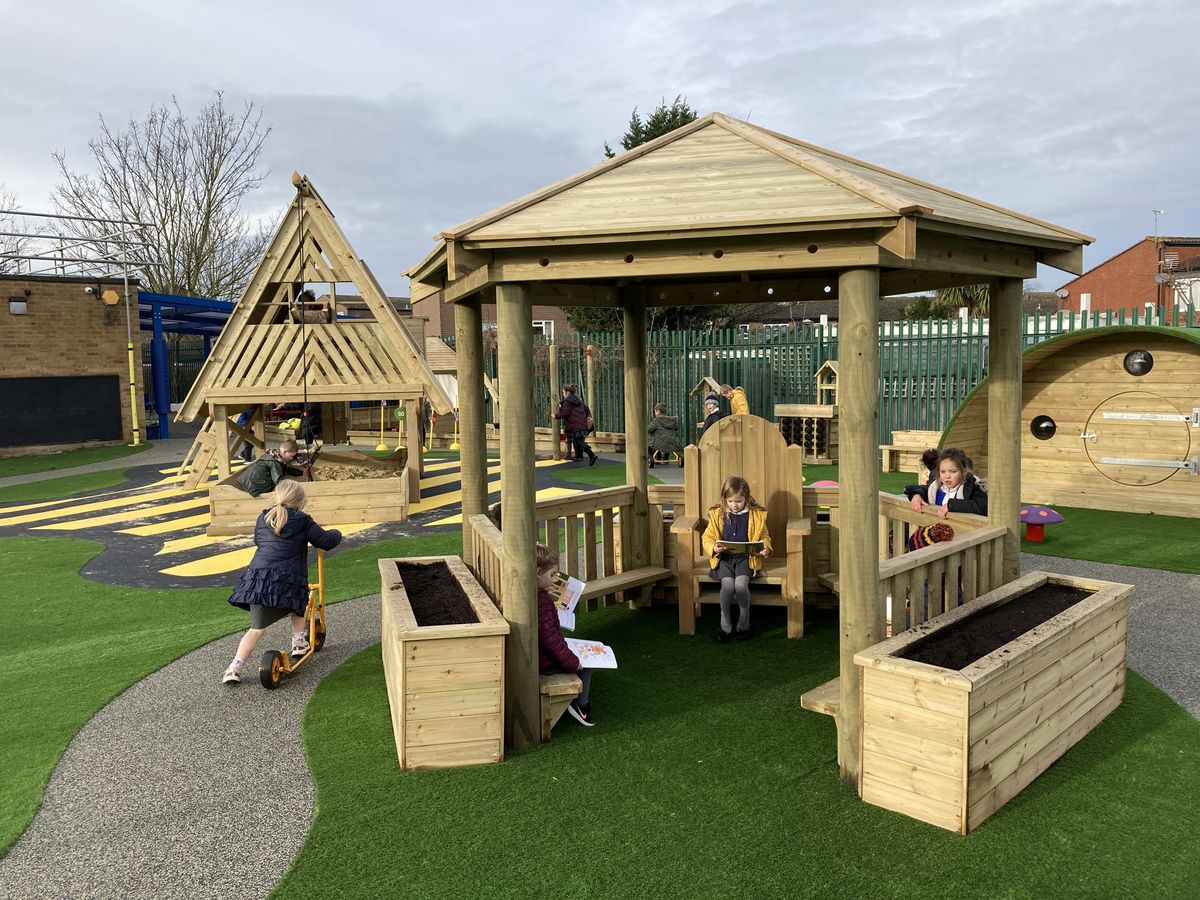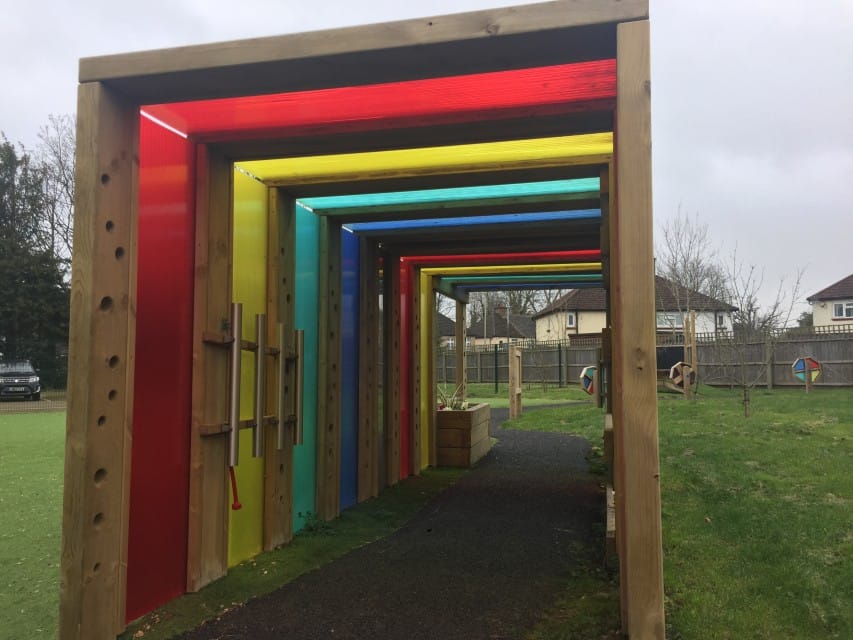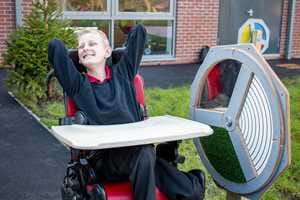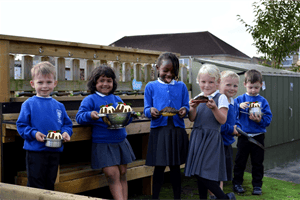
Special Educational Needs
How To Create A School Sensory Garden
A sensory garden stimulates all the senses, particularly the five basic senses of sight, smell, sound, taste and touch.
This type of garden connects children to their natural surroundings, encouraging relaxation and mindfulness.

When pupils spend time in a sensory garden it can enhance their wellbeing, reduce stress and provide a calming atmosphere. This blog provides many sensory garden ideas to get pupils growing and enjoying their outdoor space!
What is a Sensory Garden?
Sensory gardens provide sensory experiences and purposefully include features, objects and plants that appeal to our senses. Each sensory garden design can have a different purpose in mind. A sensory garden could be restful, or an exciting learning area full of things to touch and interact with.
A sensory garden can blend natural features, textures, careful planting and sensory experiences to support a wide range of feelings and emotions.
Using a Sensory Garden with SEN Students
Sensory gardens can greatly benefit students who have sensory processing challenges and autism. Children with sensory processing difficulties may have trouble processing sensations from the environment while maintaining self-regulation.

Some students with autism may avoid certain sensory experiences whilst others may seek them out. Pupils may be sensitive to certain sounds, lighting, motion and touch whilst others may seek out these experiences frequently.
A sensory garden provides children with time outdoors, to exercise, learn, nurture their sensory systems and participate in outdoor activities. A garden can be a place of peace and tranquility for both pupils and staff when they may need a break to reset.
Here at Pentagon Play we can design and create a sensory garden which balances both stimulating and calming experiences, enriching all the senses including both the vestibular and proprioceptive senses.
We are experts at creating inclusive spaces and engaging environments catering for pupils with both hypersensitivity and hyposensitivity.
Sensory Garden Ideas
Each sensory garden design will be different depending on available space. Even a planting area with aromatic plants and flowers can create a beneficial small sensory garden.
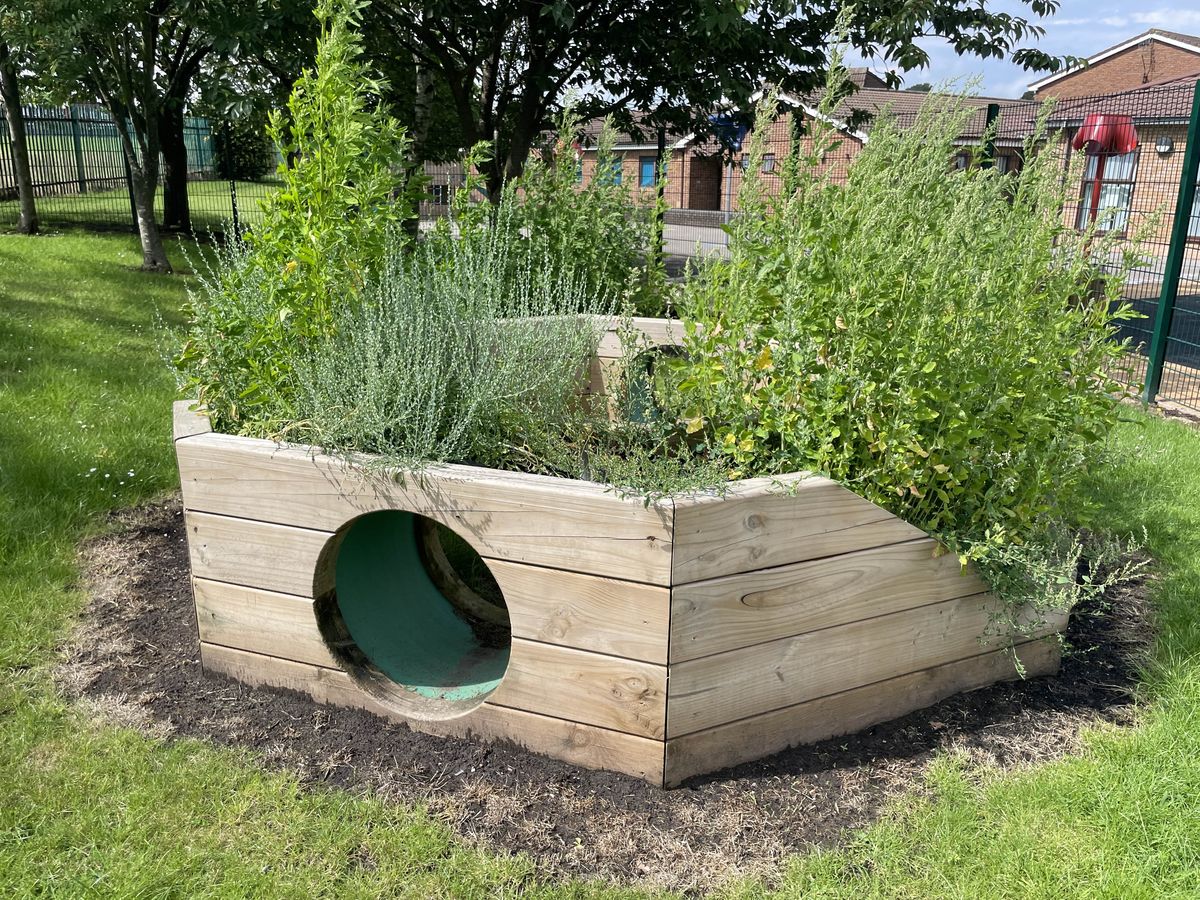
A sensory garden can be a place for discovery, autonomy and flexibility. Pupils should be invited into the garden and understand how to move around the space and access resources. When designing a garden space safety, durability and therapeutic qualities will be carefully considered.
There should be a range of spaces and different elements in the garden to suit different purposes. Some areas will feel very open whereas others will feel cosy and enclosed. There will be bright and light areas and others which are shady. Some spaces in the garden will be louder whereas other will be quiet and reflective.
Creating an Accessible and Useable Space
One of the first steps when designing a sensory garden is to consider your available space and how all garden users including wheelchair users will access and move around the area.
Wet Pour Safety Surfacing is a popular choice when incorporating pathways as it creates a safe surface and comes in a range of colours which invite children to learn and explore. Wet Pour Surfacing can be used in interesting ways, creating winding pathways and interesting routes to guide a user through the garden.
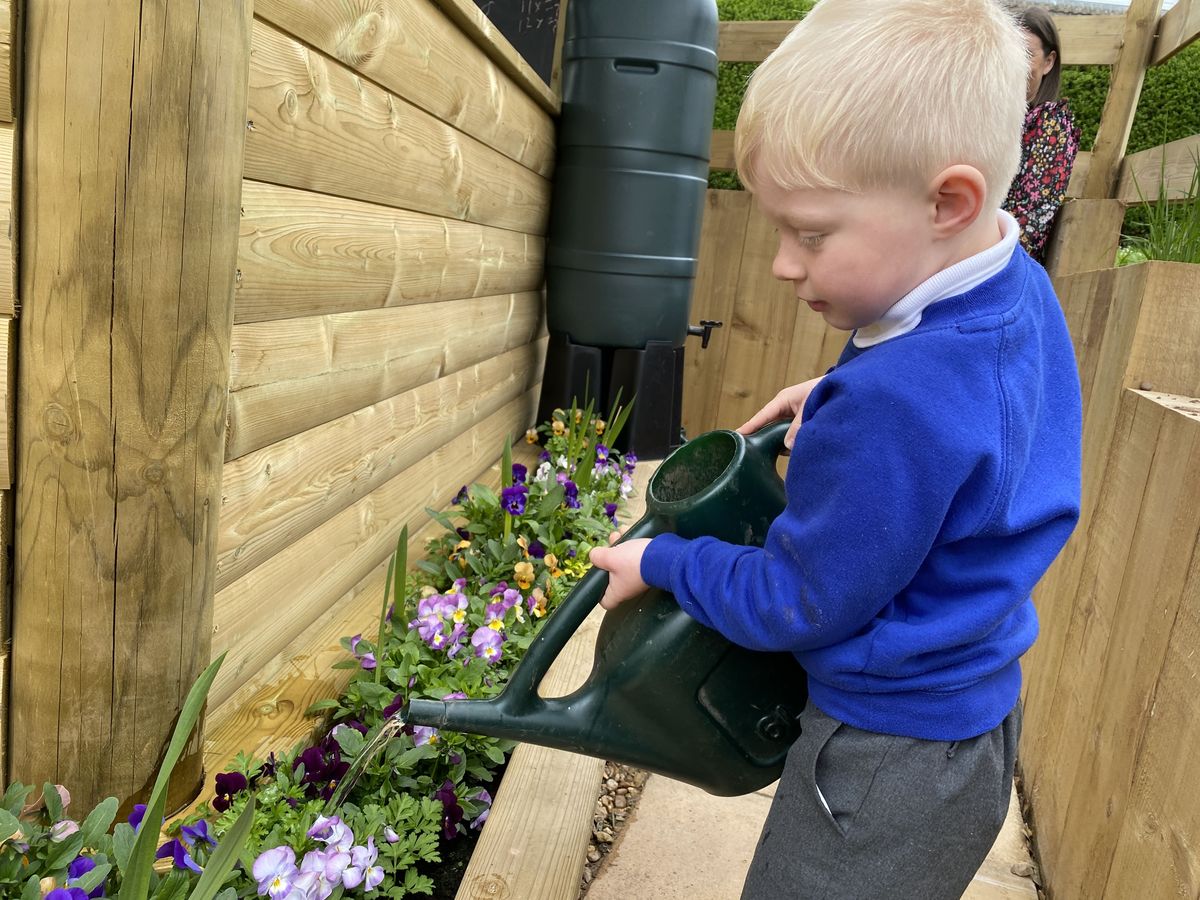
Artificial grass combines well with wet pour, woodchip and Funturf surfacing, creating different textured path surfaces.
Playground Mounds can also be used to create different gradients and provide perfect sitting spots for rest and relaxation. Our Playground Mounds are handmade by our expert teams. They can be built to a specific width, length and height to suit any area of a sensory garden.
Height and Proximity
It is important to consider the height of resources added to a sensory garden in order for children to be able to access them.
Pentagon Play offer a range of planters of differing heights including low level Sleeper Planters to enable children to independently grow plants and engage with the natural environment. Some of our raised beds including the Corner Planter Bench provide a comfortable spot for children to pause.
If students are growing fruit trees in the garden such as apple, cherry, plum or pear they will need an area with good drainage and strong sunlight. Trees will also need to be an accessible height for children to pick produce.
The Pentagon Play design team can also take into account key features of an existing space. For example a seating area could be built around an established tree to allow children to feel the tree bark.
A Space for Shelter
Shelter from the sun, wind and rain can be an important feature of a sensory garden. A Secret Garden Hexagonal Gazebo is a wonderful addition to outdoor learning.
The clever design and bitumen roof tiles can provide much needed shelter and helps children to enjoy the garden in all weathers.

The structure is surrounded by planters and a beautiful trellis to watch scented plants and vegetables grow. A blackboard provides an interactive element allowing children to record what they have grown and to draw pictures of plants and insects.
Another option to create shelter is to incorporate a bespoke Freestanding Timber Canopy. Pupils can seek shelter whilst still enjoying the outdoor garden. A polycarbonate roof keeps the rain out but lets light diffuse in creating a bright, airy space which children can enjoy year upon year.
Developing Physical Skills within the Garden
Children will need to navigate various pathways within the garden with changes in width and direction. A variety of textures including brick, tiles, crunchy gravel, smooth pebbles and artificial grass require coordination and concentration as pupils adjust to changes. Slopes, different gradients and branches will all need to be considered by the user.
Different levels can be incorporated into a garden space by using bridges, crawl through tunnels, disc poles, beams and stepping logs. Stepping logs carefully placed throughout a sensory garden will help to improve balance, lower body strength and agility.
Within early years concepts such as up and down and high and low can be introduced by hanging objects of interest to create visual appeal such as mobiles, wind chimes and hanging baskets.
Consider a Striking Arbour or Tunnel
A Sensory Arbour creates instant colour and dramatic effect in a sensory garden. Light will reflect beautifully around a garden space as it passes through multi-coloured polycarbonate side and roof panels.
Pentagon Play's Sensory Tunnels also provide visual stimulation using coloured panels. There are different versions available each creating a different ambiance. Red and yellow panels are associated with stimulation whereas blue and green panels are more calming.
Alternatively a Robinia Trellis Archway could form a beautiful, colourful entrance to the sensory garden using climbing plants such as clematis, climbing hydrangea, honeysuckle or ivy.
Students could work with an artist to create permanent or temporary installations bringing different colours and textures into a sensory garden space.
Pupils could be involved in creating large murals or mosaics. They may even thread colourful beads onto string which can be hung to form colourful curtains or create fairy gardens in a digging pit.
Planting Design
The main source of colour in the garden will come from the many plants and flowers which will change with the passing seasons.
Choose plants with bright and bold flowers and nectar rich plants to attract birds and insects, encouraging pollination and seed dispersal. Colourful plants with bold leaves and interesting shapes include:
- Sunflowers - a bright, distinctive flower which will add height.
- Love-in-a-Mist (Nigella) - hardy, annual bright blue flowers.
- Swiss Chard (Bright Lights) - brightly coloured stems and foliage, easy to grow.
- Tulips and Sweet Peas - bring dazzling colours.
- Colourful Wildflowers such as - Lily of the Valley, Common Daisy, Primrose.
Trees such as acers, sweetgums and cherry trees can also bring wonderful displays of colour to a school sensory garden.
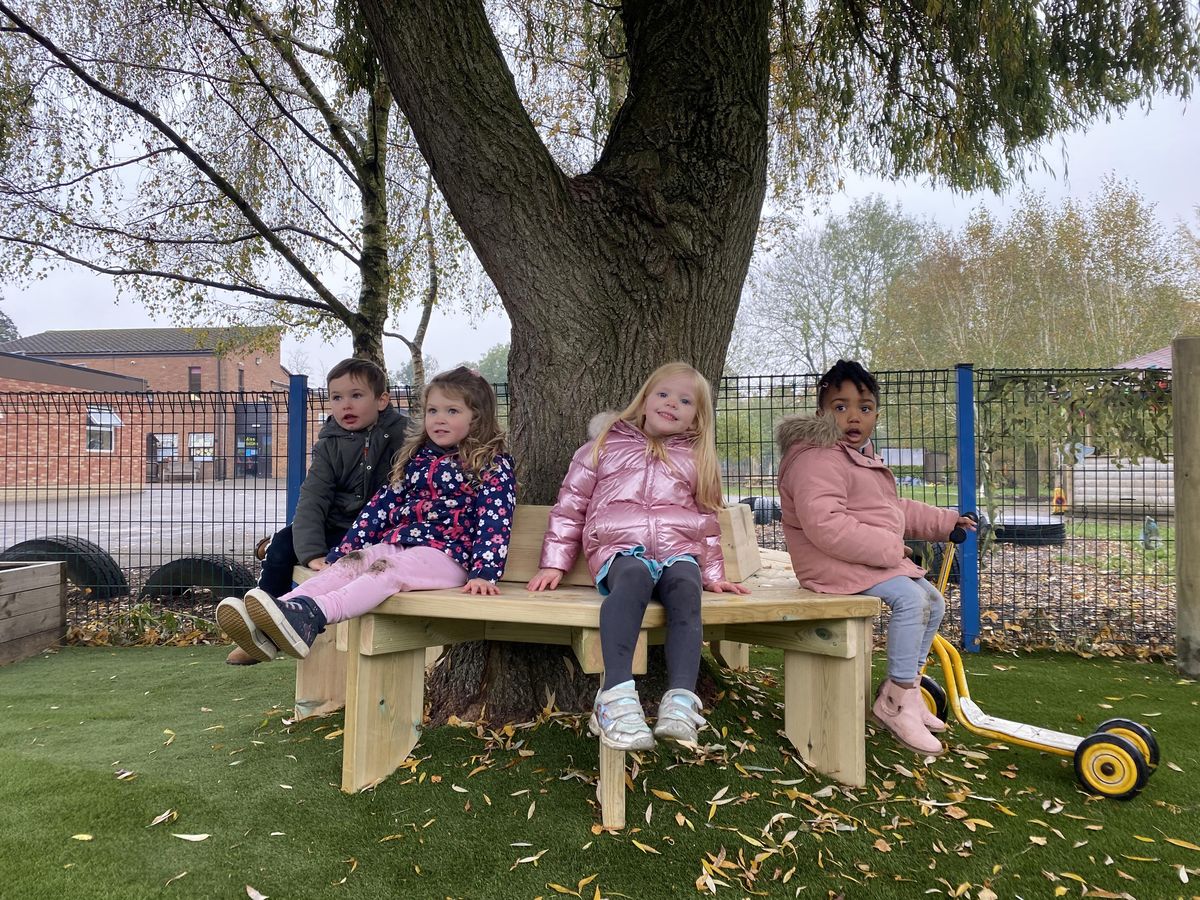
Plants to Taste
There are many delicious plants which children can grow to stimulate the taste buds and use in cooking! Schools must carefully consider potential allergies.
- Spearmint - tastes great with peas and new potatoes.
- Apple Mint - a hardy perennial mint used to make fruity mint sauces.
- Chives - delicious foliage which can be added to salads.
- Wild Strawberry
- Fragrant herbs: Sweet Basil and Rosemary
- Pupils can also grow vegetables such as carrots, lettuces, radishes, broad beans or peas
Plants to Smell
Pupils will enjoy the wonderful aromas given off by certain fragrant plants. Stronger smelling scented plants can stimulate the senses while softer smells can be calming. It may be worth considering this when planning separate areas of the sensory garden.
- Curry Plant - curry smelling leaves give off a spicy aroma on a warm, sunny day.
- Chocolate Cosmos - maroon flowers which give off a chocolate/vanilla scent which will appeal to children.
- Lavender - purple flowers which produce a relaxing, calming aroma.
- Mock Orange - a classic flowering shrub with a delicious smell of orange blossom.
- Stock Flowers - traditional, scented summer flowers which come in a variety of shades.
Plants to Add Sound to the Garden
The sounds of nature help to create a wonderful sensory experience. Choose plants such as dried grasses and deciduous hedges.
Dried leaves will stay on shrubs until the new leaves emerge in the spring, creating rustling sounds throughout the autumn and winter.
- Ornamental Grasses such as Briza Maxima have green locket-shaped flowers which rustle and shimmer in the breeze.
- Nanus Variegatus - a deciduous grass which create a rustling noise.
- Phyllostachys - bamboo stems which whisper in the wind.
- Pennisetum - ornamental fountain grass with fluffy flowers.
Creating Texture within the Garden
Leaves vary between plants and have interesting textures from rough to smooth to furry and spiky! A selection of plants which may be soothing for students to feel include:
- Lamb's ears - an evergreen perennial with white and woolly leaves.
- Jerusalem Sage - soft, downy leaves.
- Silver Sage - Silvery, woolly leaves.
Sensory Gardens Provide Hands-On Learning
A sensory school garden should allow children to learn by touching and exploring. A garden will offer up many different textures from leaves to fruit, to pathways and tree trunks.
Pentagon Play offer a range of Sensory Spinners and Panels which bring new, interesting opportunities into the sensory garden. Children will enjoy touching and exploring new textures, developing curiosity whilst helping to regulate emotions.
.jpg)
Sensory panels are wall mounted and spinners are simply set into the ground using fast-setting concrete allowing great flexibility when choosing a position in the garden.
Sensory panels can be fantastic sound fences in the garden. Our Large Sensory Panel with Dowels and Chain offers auditory stimulation as children run their hands across the links.
The National Curriculum for Science places great emphasis on 'Growing Plants.' Key Stage 1 pupils are required to identify and name a variety of common wild and garden plants and identify and describe the basic structure of common flowering plants and trees.
If pupils had access to a sensory garden throughout the school year they can observe, question and work scientifically in a hands-on way which adds greater meaning to learning.
A Wonderful Water Feature
The sound of running water can bring a sense of calm to a garden space, often inviting an emotional response. Listening activities are a good way of calming pupils and tuning them into their environment.

There are various ways to include water features in a sensory garden ranging from a pond to a bird bath.
On a rainy day children will enjoy sitting under a shelter and listening to trickling, dripping and splashing overhead.
A Pentagon Freestanding Water Wall could be a great active water feature in a sensory garden. Pupils can position water channels forming interesting routes for water to flow through. Watching the water flow freely can provide a wonderful sensory experience and aid mindfulness.
Cause and Effect in a Sensory Space
A range of Pentagon products can really get children involved in their garden space. Freestanding Chimes or a Musical Triad can be activated by running a beater across stainless steel chimes. Children can have great fun whilst creating melodic sounds.
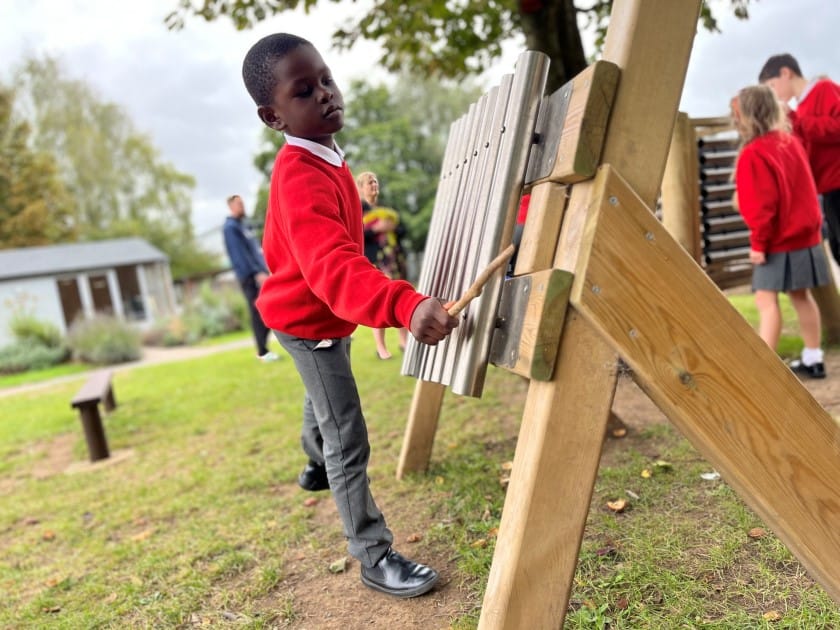
A STEAM Table may also work well in a garden space where children use their hands to turn cogs and pins, developing logic and creating their own circuits.
Create A Sensory Garden For Your Pupils Today!
A carefully planned sensory garden filled with enticing sounds, scents and textures is sure to delight pupils. Sensory gardens offer tangible experiences which can aid regulation and relaxation. Sensory gardens appeal to all but may be particularly beneficial to children with sensory needs.
Sensory gardens can greatly enhance a schools outdoor provision. Children can take ownership of the project and learn by gaining hands-on experience.
Pentagon Play have a wide range of sensory products which require no installation and cater to a wide range of budgets. We would love to hear from you to discuss and design your dream sensory garden space.

